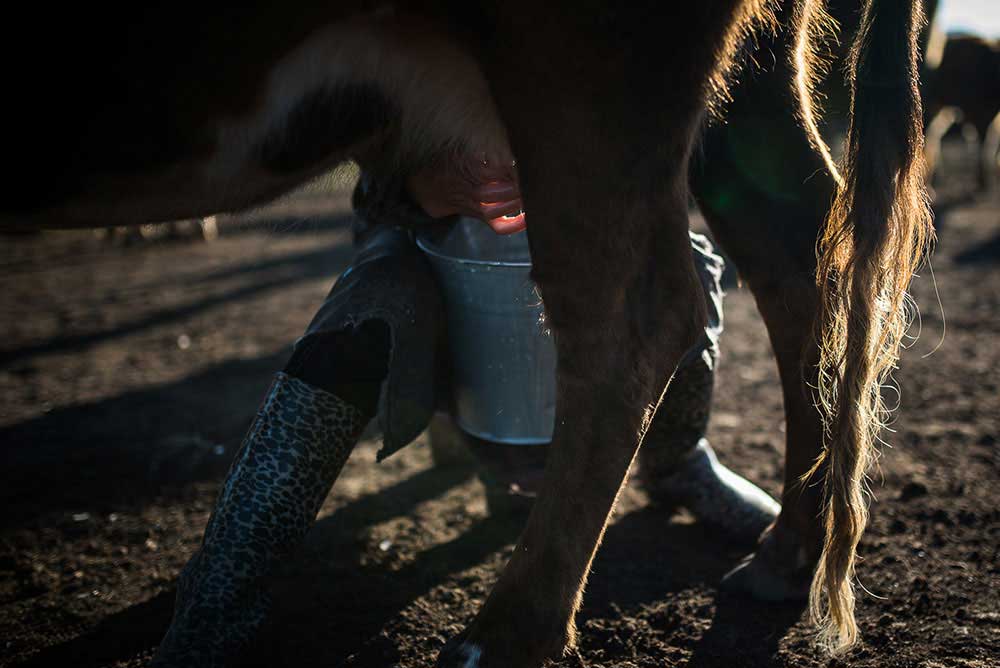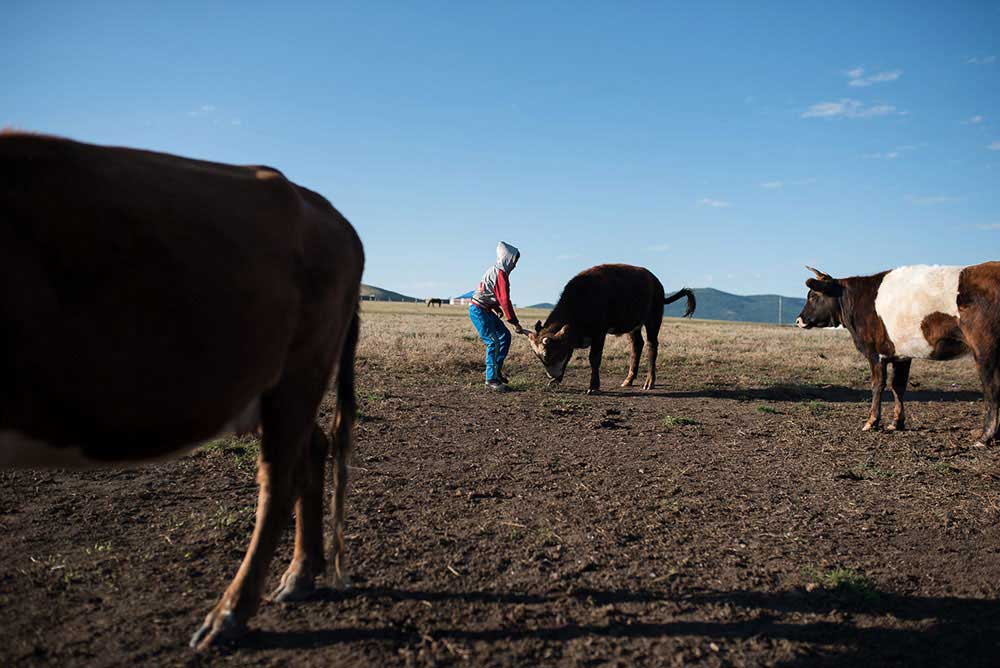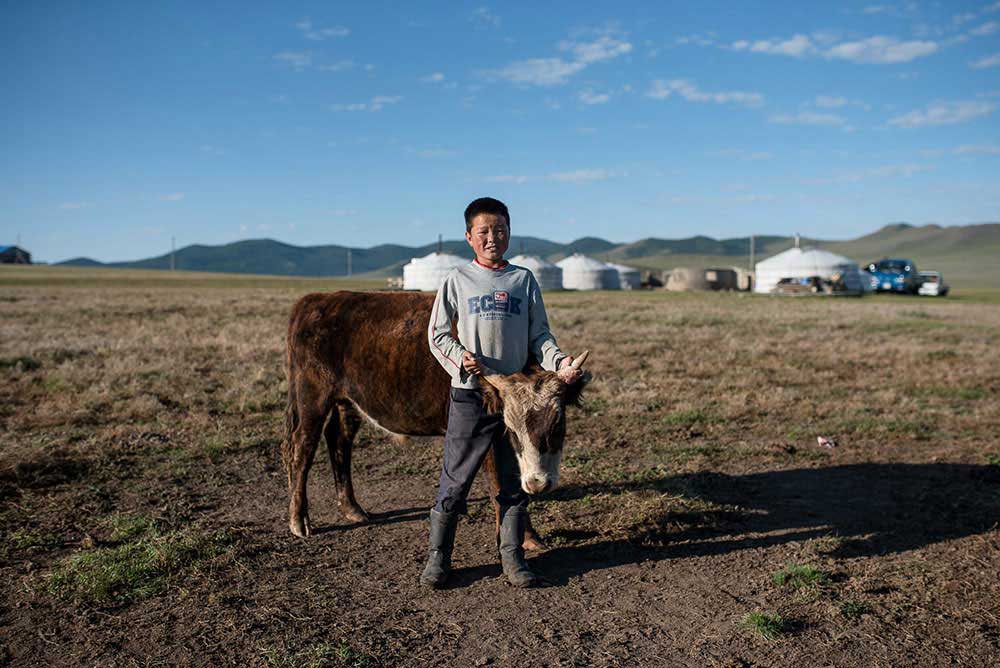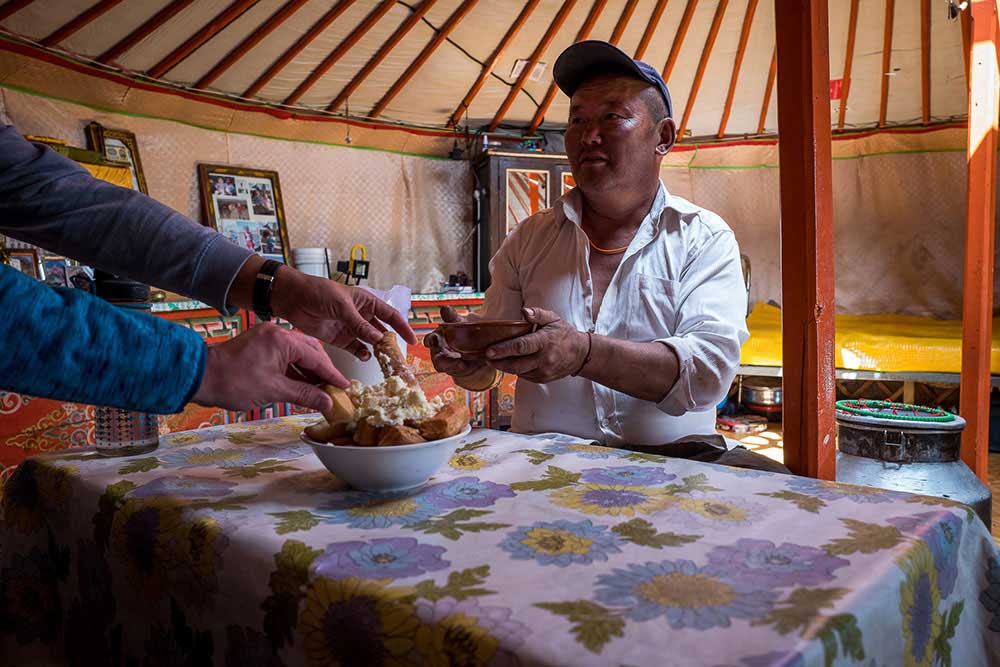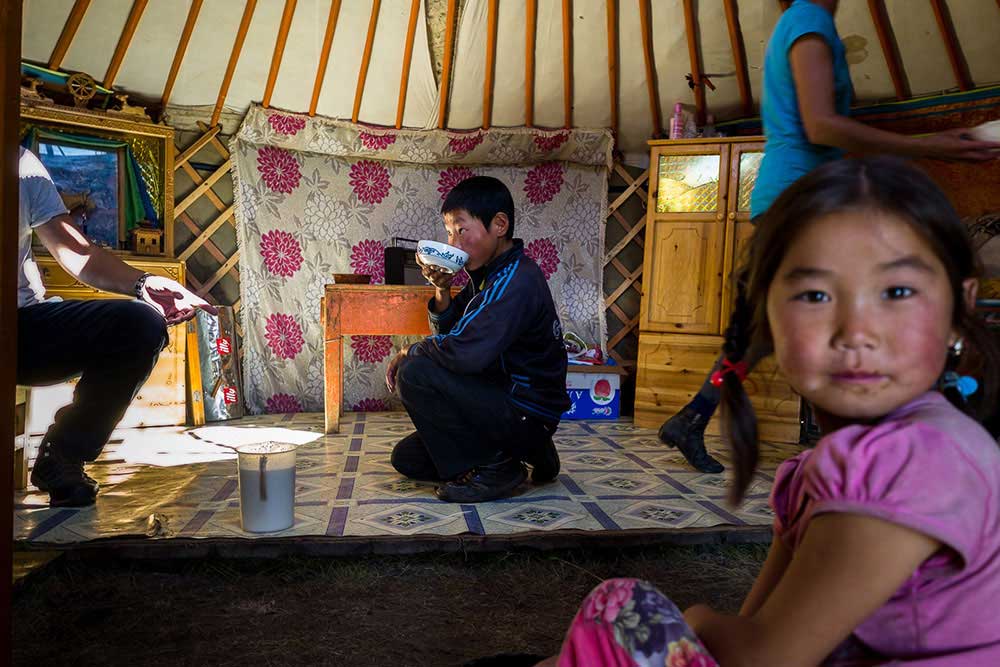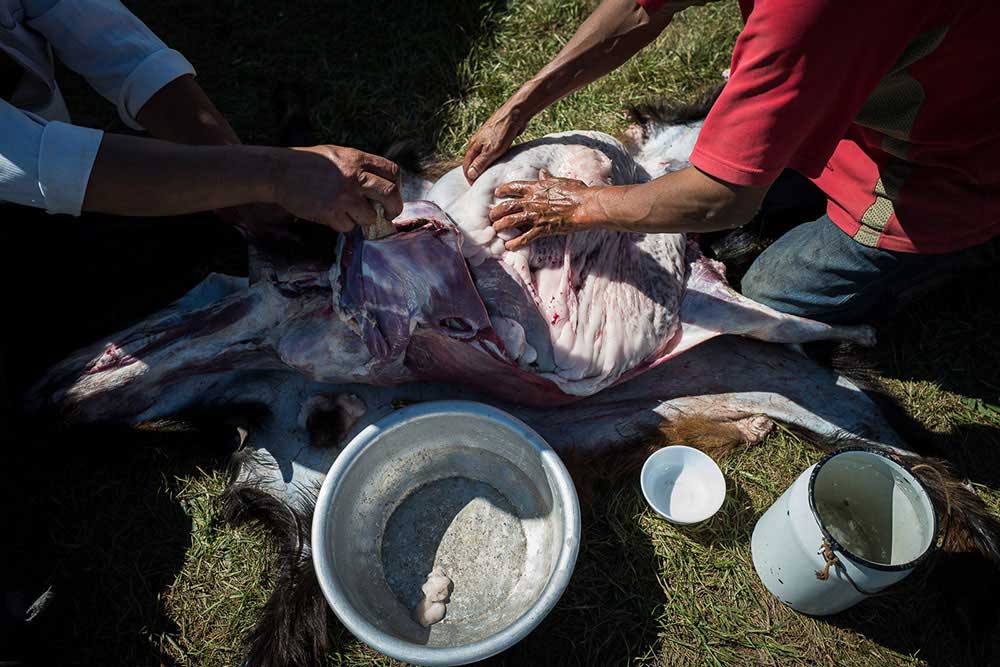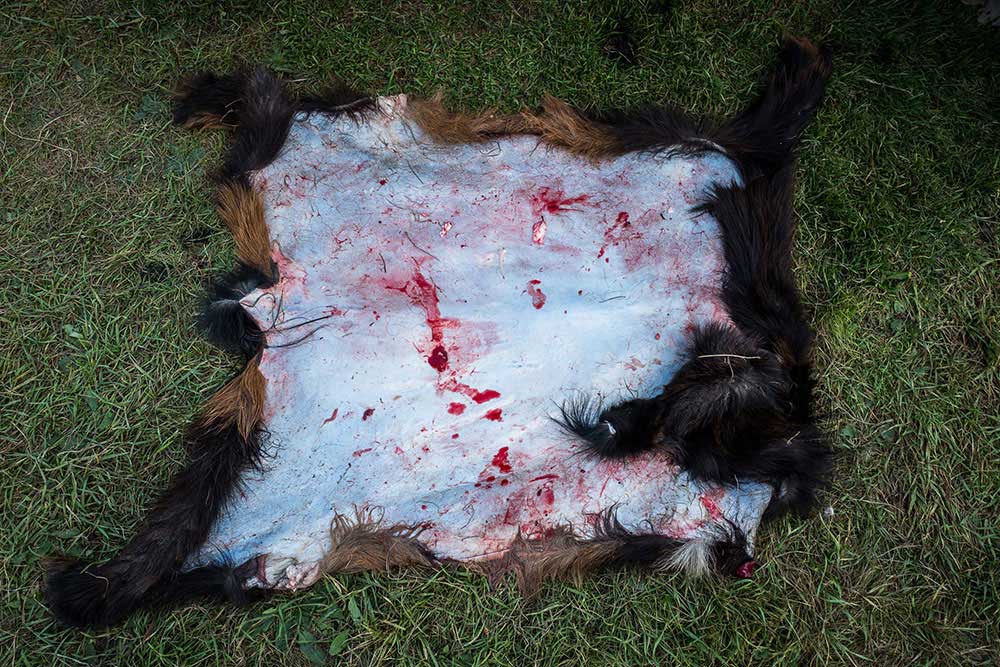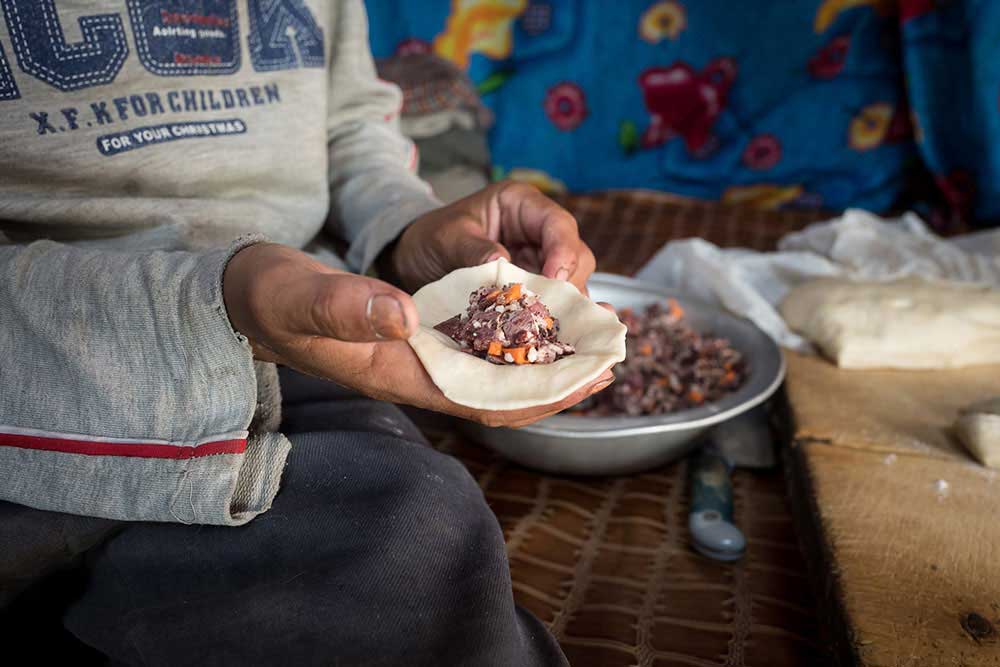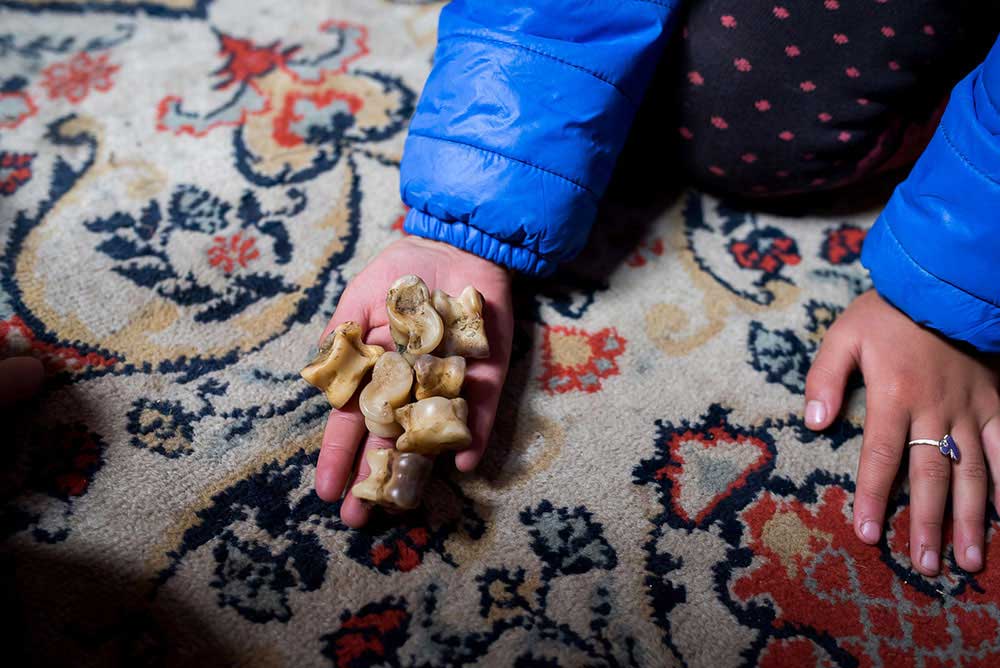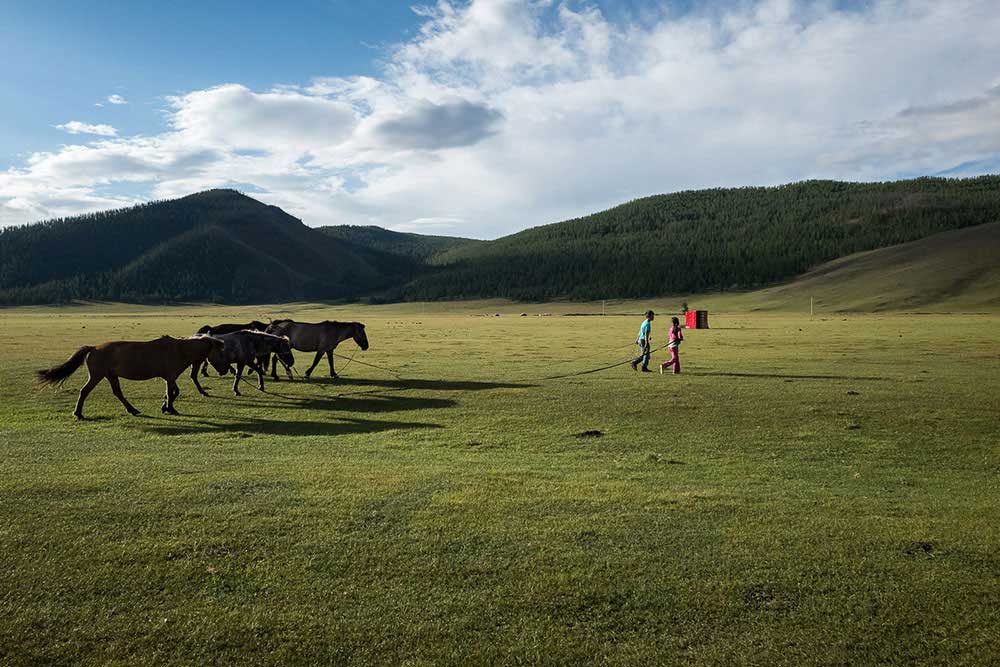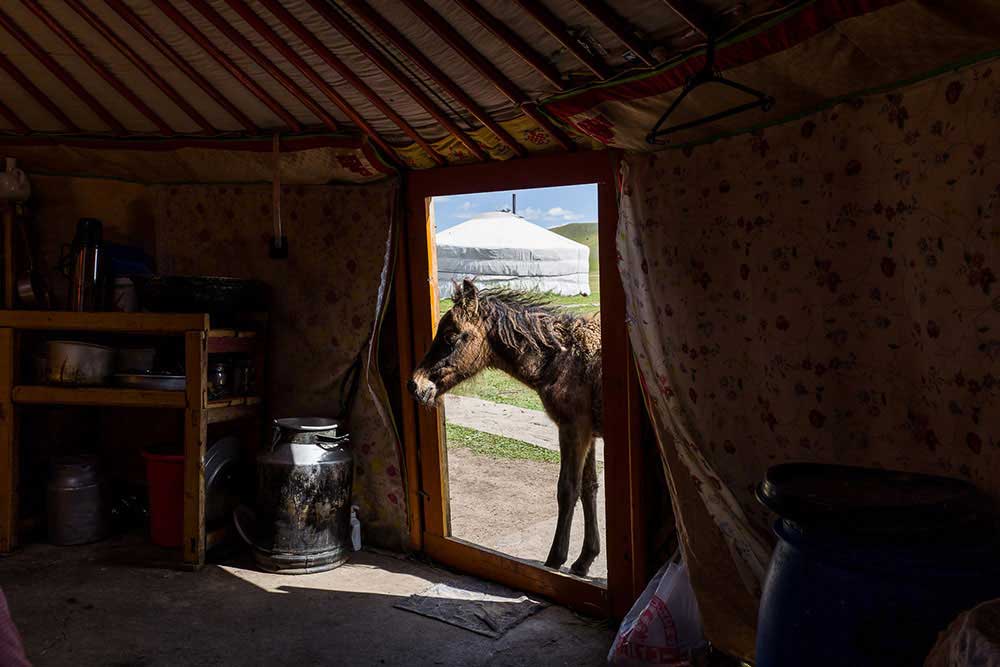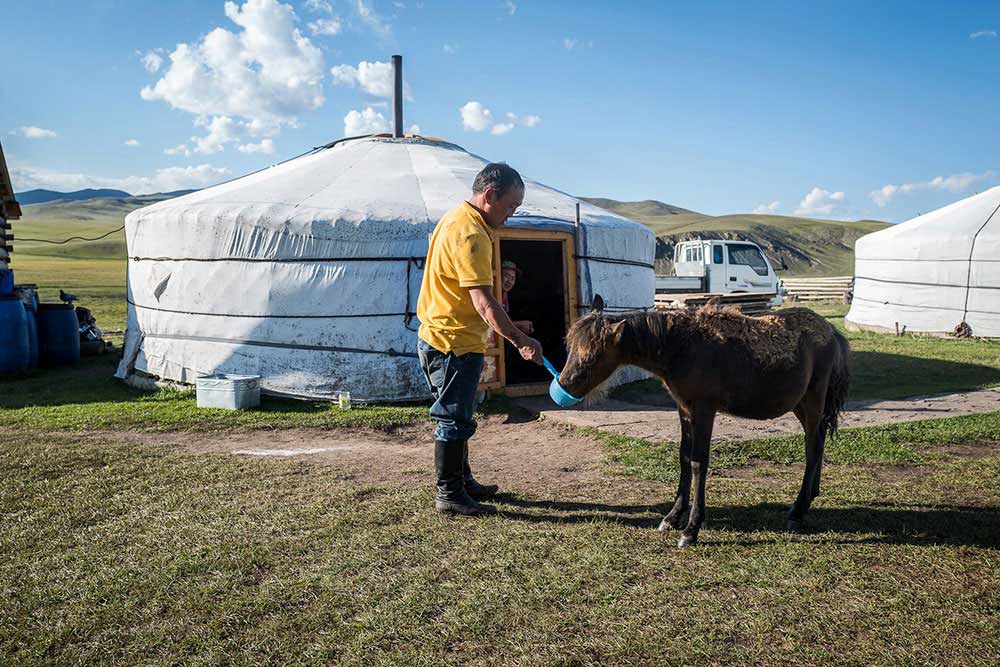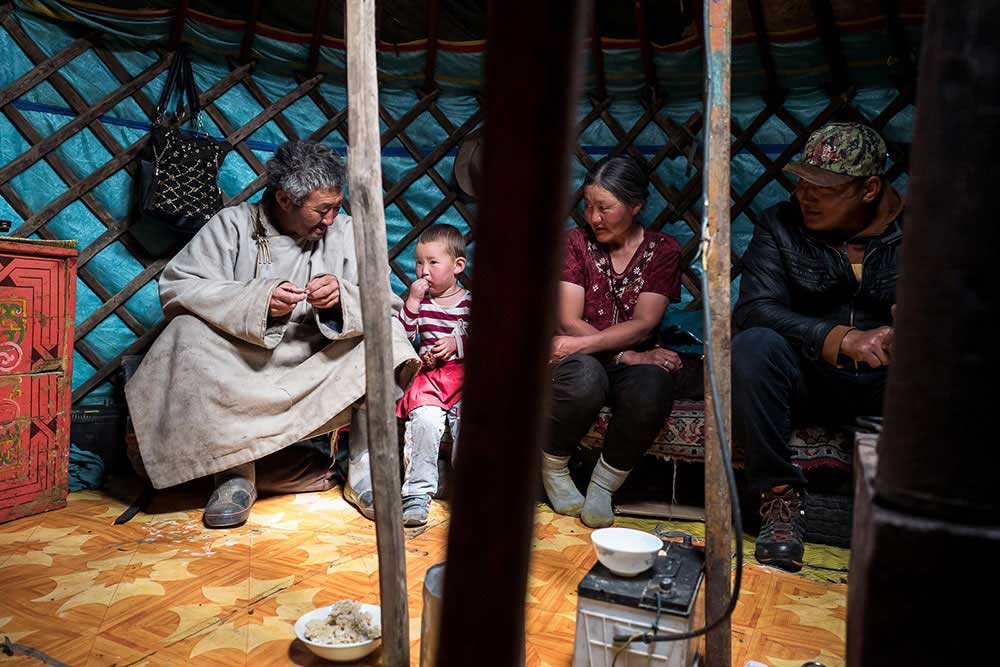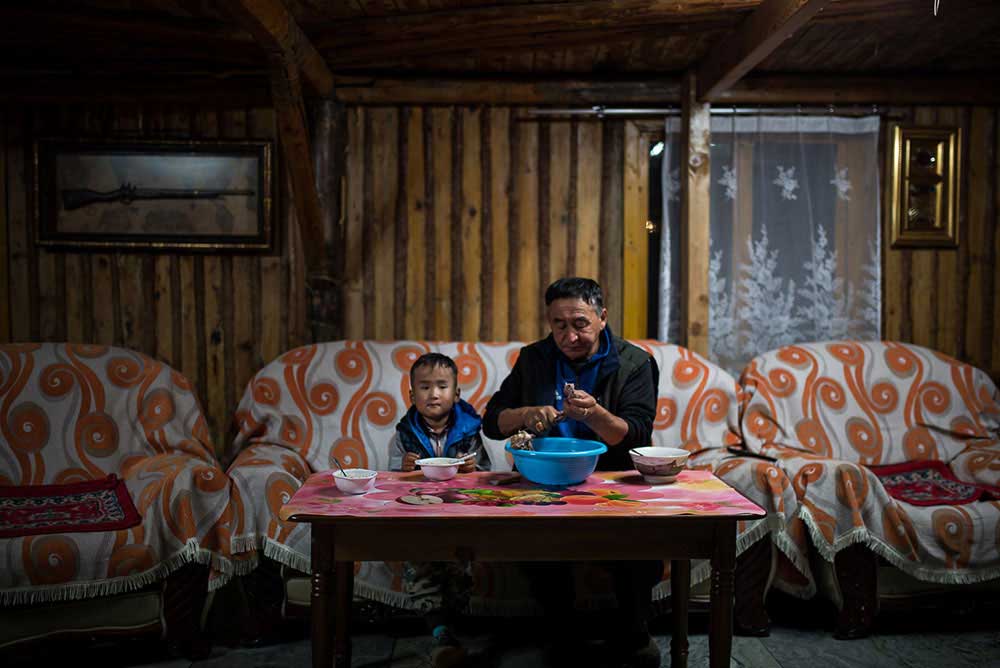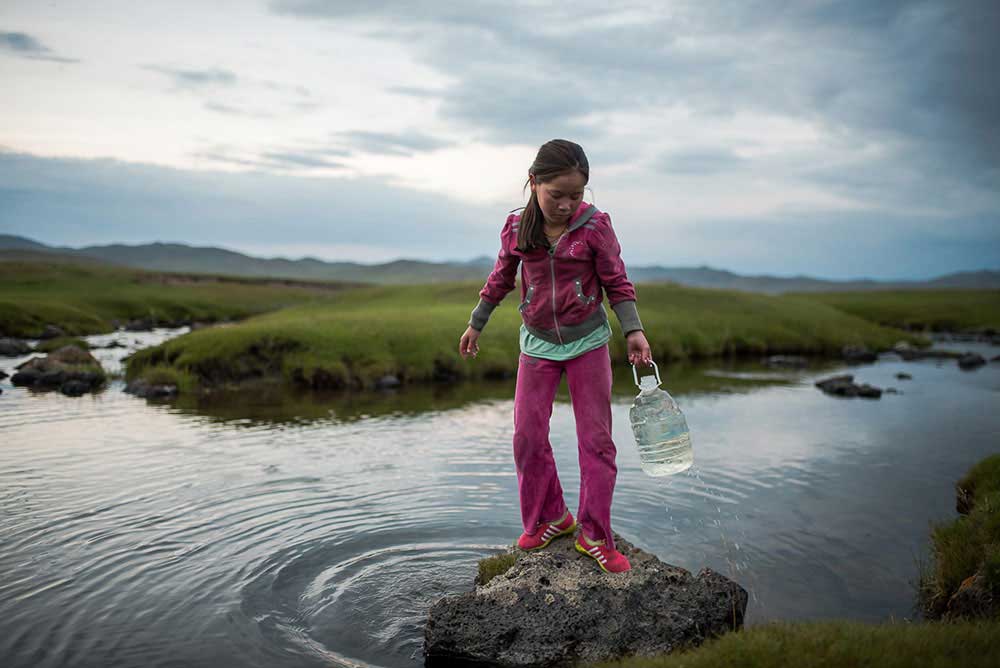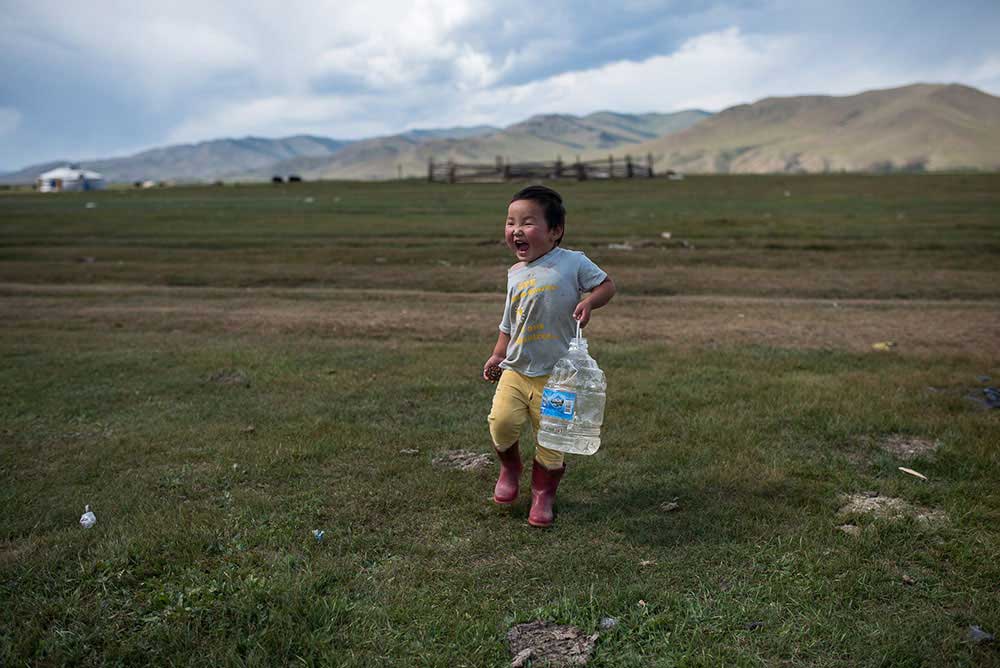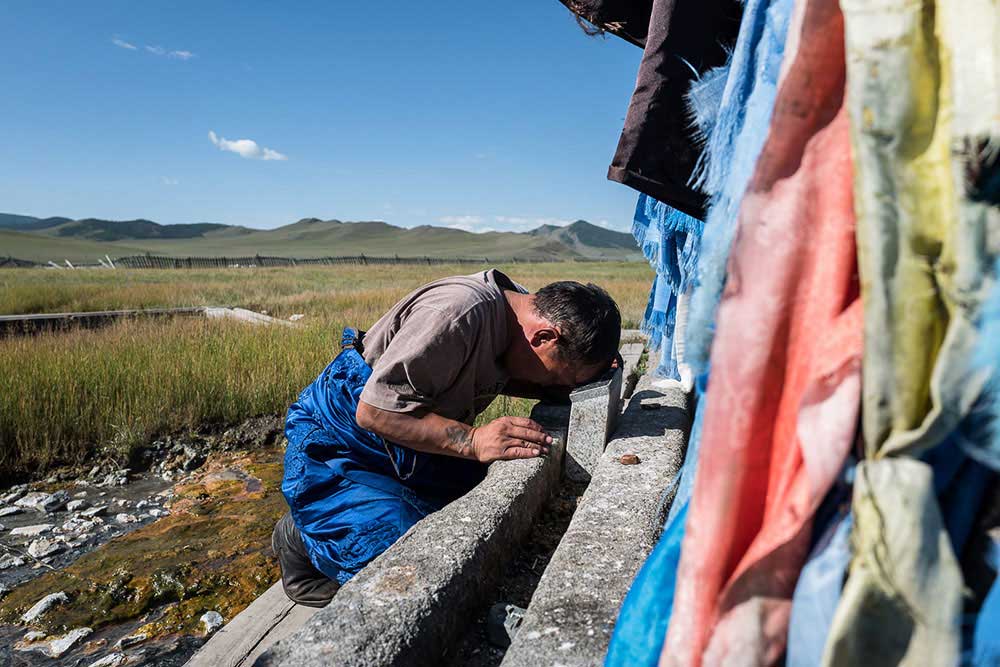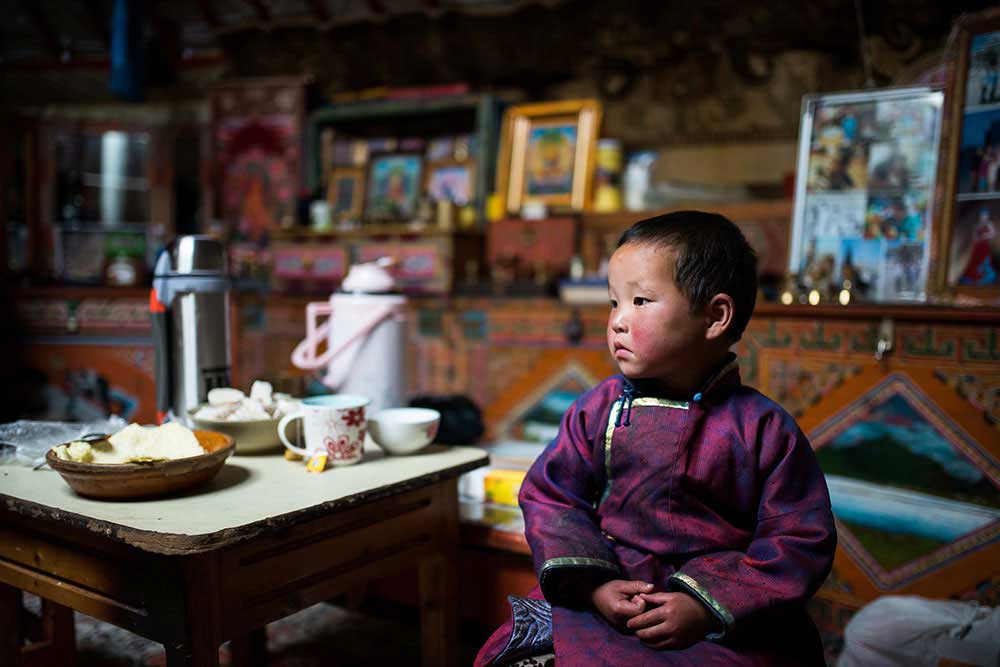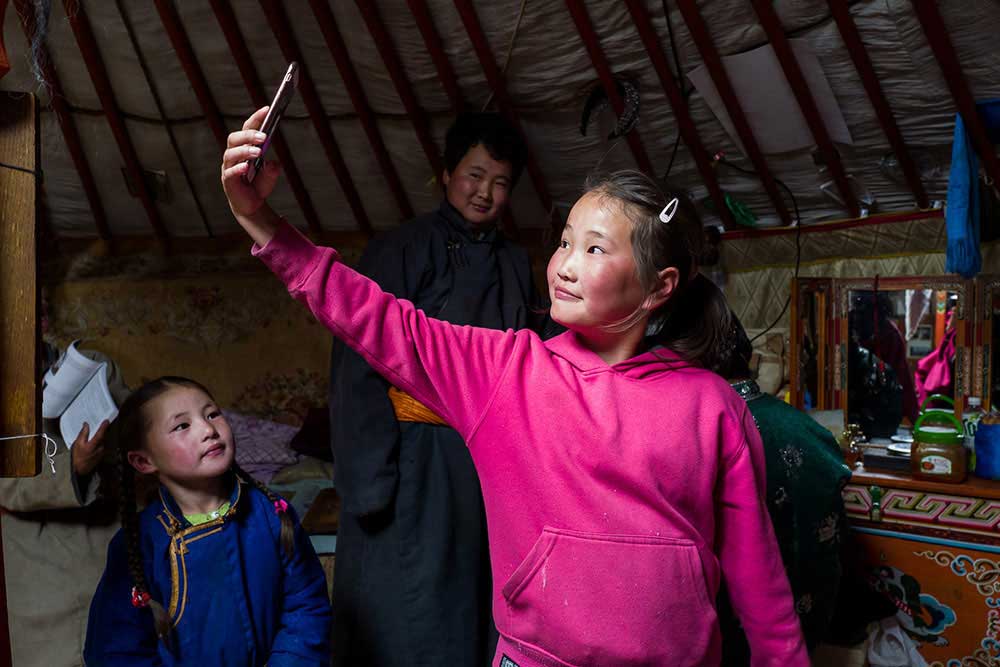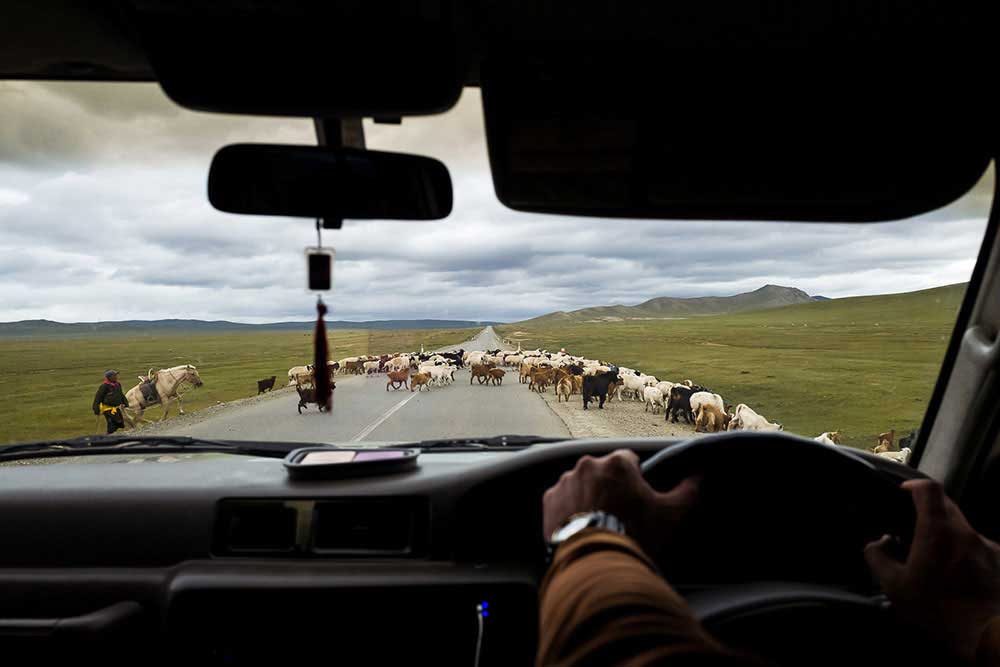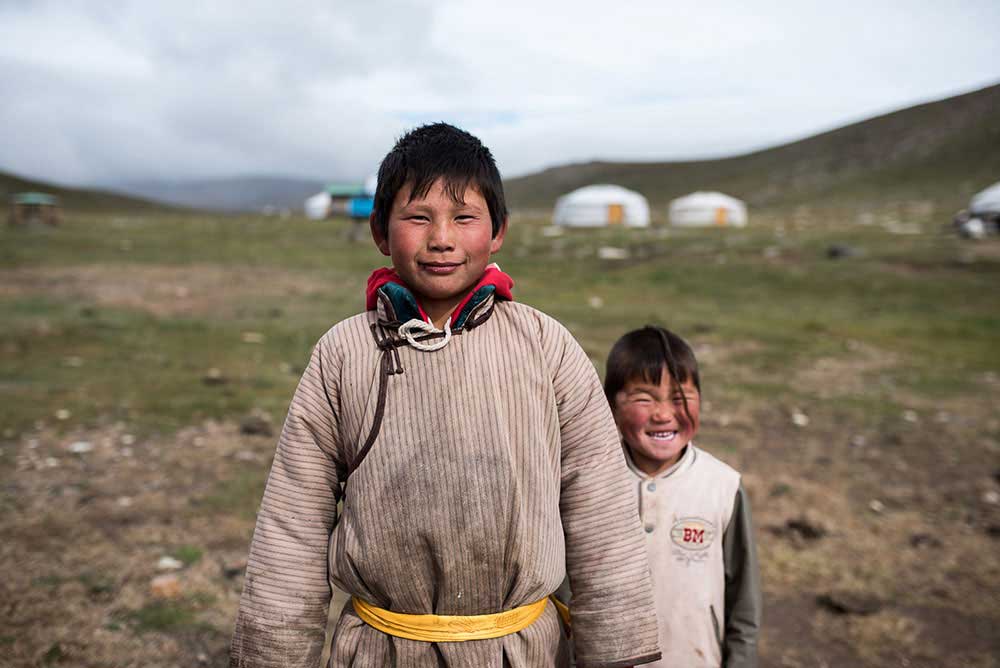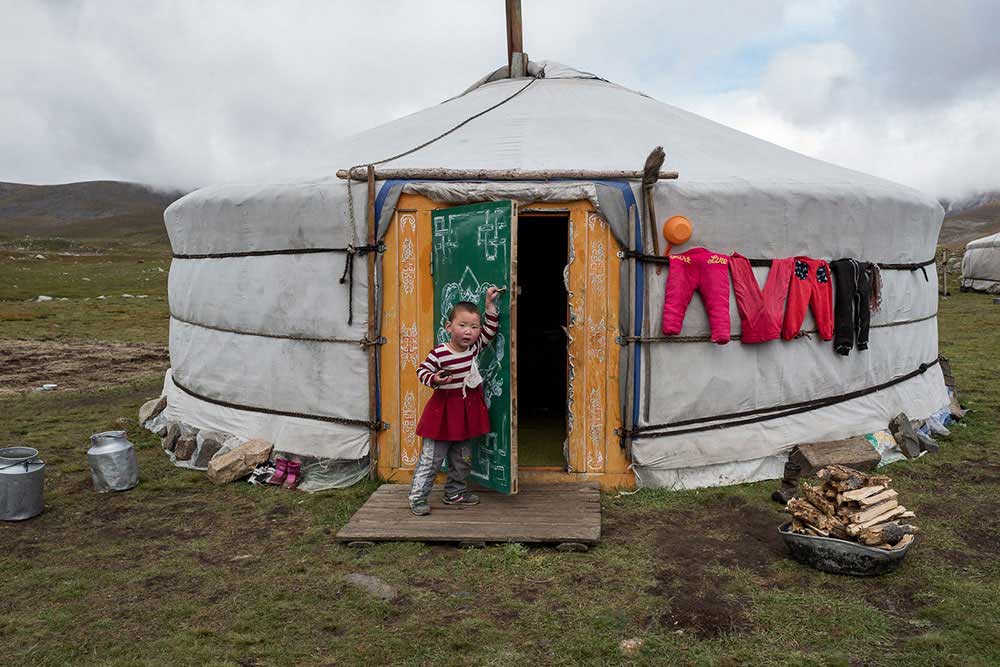Mongolia is a landlocked country located between China and Russia. It is a vast emptiness that links land and sky and is one of the last few places on the planet where nomadic life is still a living tradition.
Mongolia may have various geopolitical, cultural, and geographical meanings. Mongolia consists of historic Outer Mongolia. The province of Inner Mongolia is geographically and politically separate and located in the northern part of China, yet it borders Mongolia. Approximately 30% of the population is nomadic or semi-nomadic, with livestock husbandry playing a central role. They live in gers, or yurts as they are referred to in Turcic languages, portable, round tents covered with skins or felt.
Domestic livestock ranges from cows to sheep, goats, camels, yaks, and — most precious — horses.(Fermented) milk is a popular drink and an important Source of income in Mongolia. The farmers have their cows milked twice a day.
The young children already learn herding tradition and other farming skills, and the animals are both a source of income, food, and companions. The children in particular enjoy playing with them
The nomad families are proud of their fermented mare’s milk. This is an important drink that is also offered to greet guests of the family. Here it is used for a drinking game.
Their livestock is very precious to the nomads, and the whole animal is used from head to toe, including the innards.
A favorite meat dish is Buuz, dumplings filled with meat and vegetables and then steamed, mainly for holidays or special occasions.
Even the bones of the animals are used. Each of the four sides of the knuckle-bone represents a different animal (a horse, sheep, camel, and goat).
Horses hold a special place in Mongolian ́s heart and of all the domestic animals are held in highest esteem. Mongolian nomads are considered to be some of the best horsemen in the world.In Mongolia, barns, pastures and stables are an exception. Generally, horses are allowed to roam free and feed themselves. Even in the harsh Mongolian winters, the horses are usually simply allowed to graze freely on the steppe, digging through the snow to find forage in the winter.
The little foal peeking onto the ger in is hoping for milk. Because it is an orphan, it has to be fed mare ́s milk by hand by the family. The clever animal knows exactly where the milk is.
Family is important in Mongolia. The little girl sitting here with her grandparents is having a snack: pine nuts straight from the cone, a seasonally limited snack fresh from the tree that is popular with young and old alike.
The children are very much involved in day to day household tasks and farm work. They attend school but during holidays and on weekends they support their parents.Even the smallest ones help, and seem proud to be involved.
Buddhism is the largest religion of Mongolia practiced by 53% of Mongolia’s population, according to the 2010 Mongolia census. Buddhism in Mongolia derives much of its recent characteristics from Tibetan Buddhism of the Gelug and Kagyu lineages, but is distinct and presents its own unique characteristics.
Batsaikhan Oyun praying for peace, compassion, strength, and wisdom at a small stupa with prayer flags.
Mongolian tradition involves cutting children’s hair in a special ceremony called Daah Urgeehc when children are between the ages of two and five.
Although their lifestyles are traditional, Mongolian nomads are no strangers to technology. and the children like playing with mobile phones just like anywhere in the world. Here, Enkhjargal was showing me how she takes a selfie with my iPhone.
Despite their traditional lifestyles, Mongolian nomads use modern transport like anyone else. The road network is rapidly expanding. There are paved roads from Ulaanbaatar to the Russian and Chinese borders, from Ulaanbaatar east and westward and from Darkhan to Bulgan. Many overland roads in Mongolia are still gravel roads or simple cross-country tracks.
Outside Ulaanbaatar, there is little traffic. The only traffic jams tend to be caused by the crossing of the streets of domestic animals.
Although many nomads now move to the city in search of education and better economic opportunities, according to a World Bank report at least a quarter of them still live as nomadic herders, something that is important to their cultural identity. But herding is a hard life, and three out of five people living in poverty in Mongolia are herders. It remains to be seen for how much longer this lifestyle will remain intact, as more young people are moving to urban areas.
About Callie Eh
For Callie Eh photography was a life-saver. It picked her up at a difficult time in her life and has not let her go ever since. Originally from Malaysia, Callie has lived in various countries and is now based in Switzerland. Callie started Photography when she 40s, for her becoming a photographer is not something she has planned in the first place. At least not until 2015 when she moved to Poland, her work was discovered by a cafe owner and her passion for photography was growing ever since. She developed her photography knowledge and skills by attending different workshops, online photography classes, and photography books. What really help improve her work was a documentary workshop in Krakow 2016, which was extremely intense and really impact her work in the future.
Photography has changed her view of the world and made her see things differently. Although she likes to mix genres, her greatest photographic passion right now is documentary photography, inspired by her travels, the people she meets, different cultures, and different ways of life.
Her work has been exhibited internationally – ” Modern Nomads” has been exhibited in Poland and Malaysia 2017, Featured article “Mongolia Series” at Stern.de News Magazine Germany 2018, Publish Leica LFI Magazine 2018, Solo exhibition “Foto Journey with Callie” in Wroclaw Poland 2019, Interview in The Picofrial-list 2020. [Official Website]



